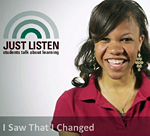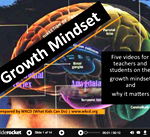
Learning by Heart: Social and Emotional Learning in Secondary Schools
INTRODUCTION
At this school, they go all out around the student’s emotions. They ask, they listen. Me, I feel comfortable here. I don’t wake up and think, “Oh I hope this don’t happen. I hope that don’t happen.” You go in with an open mind and a clear mind and you think like, “I’m okay. I’m fine. I’m ready to learn.” - Jameisha, Fenger High School, Chicago, IL
What would it take to weave social and emotional learning (SEL) into the daily fabric of our nation’s high schools? What distinct practices, programs, and structures help schools embed SEL into ongoing teaching and learning? How does this vary from school to school, in response to the conditions that make that school unique, that shape its climate? What formal and informal measures do schools use to assess the impact of social and emotional learning on student success?
For the past year, with support from the NoVo Foundation, WKCD's research arm has asked these questions and more as part of an in-depth investigation of social and emotional learning in U.S. secondary schools--where the documentation is scant. We've parsed the existing research to clarify what's meant by "social and emotional learning" (SEL) and why it matters. We've studied effective practices in five American high schools that, by their own design, put social-emotional learning at their core. We've created multimedia to capture the authentic voices and experiences of students in these schools. And we've assembled selected SEL resources for educators.
| LEARNING BY HEART: THE POWER OF SOCIAL-EMOTIONAL LEARNING IN SECONDARY SCHOOLS Effective Practices and Their Implications for Policy [DOWNLOAD PDF] |
 |
'Cognitive' vs. 'Noncognitive': Research and Commentary Does it still make sense to use the term “noncognitive” to distinguish emotions, beliefs, and character from content knowledge, the “cognitive”? A mounting body of research points to the mutuality of academic, social, and emotional learning. Here we summarize what the latest research says about the benefits of social-emotional learning—including what’s meant by SEL. We also share some recent commentary about erasing the line between cognitive and noncognitive factors in student achievement. |
 |
Learning by Heart: Five American High Schools Where SEL Is Core How can high schools weave SEL into their daily practice? In six case studies, WKCD documents the transformative power of social and emotional learning, and its connections to deeper learning, in a diverse collection of U.S. secondary schools. Student voice permeates these stories, including multimedia created from interviews with students. The series features: East Side Community School, New York, NY; Fenger High School, Chicago, IL; Oakland International High School, Oakland, CA; Quest Early College High School, Humble, TX; and Springfield Renaissance School, Springfield, MA. |
 |
Just Listen: Students Talk About Social-Emotional Learning What most helps young people thrive in a challenging academic environment? Answers from students bear out what research has found: social and emotional factors constitute a crucial underpinning for learning. In these short videos and audio slideshows, a diverse array of youth give examples of how everyday interactions between students, peers, and adults affect their learning in school. They speak of developing agency and empathy, belonging and safety, motivation and persistence. They describe what it feels like when the adults in their school make clear that they can accomplish important things and they do matter. |
 |
Taking Action: The Lay of the Land We find relatively few portraits of social and emotional learning in secondary schools, and even fewer that connect such learning to academic mastery. Here we offer a scan of some of the major players and frameworks in the SEL field at large. The selection arguably reflects WKCD’s own experience and perspective as a longtime advocate of “deeper learning” in our nation’s high schools. There are links throughout: to leading organizations in the field, to key concepts (e.g., growth mindset, restorative justice, character education), and to resources and tips for practitioners. |